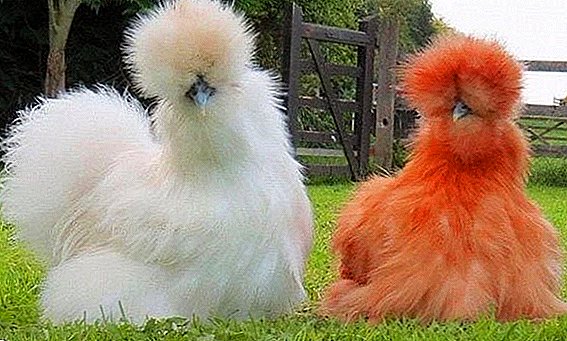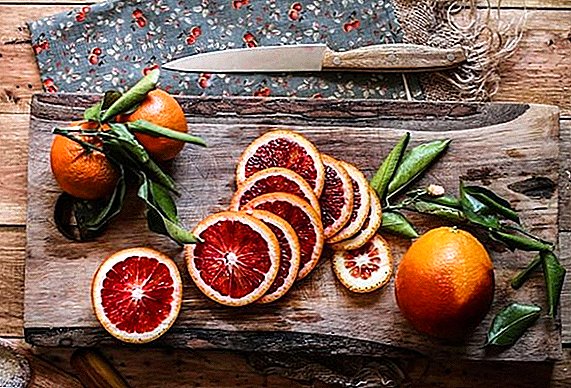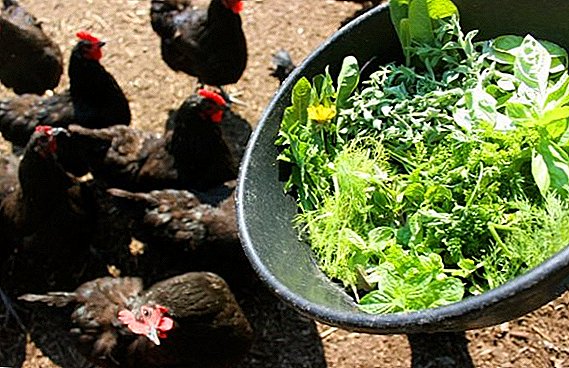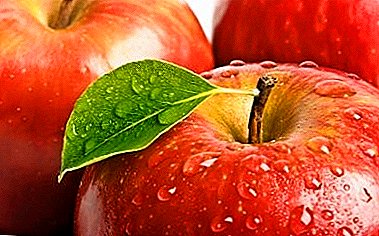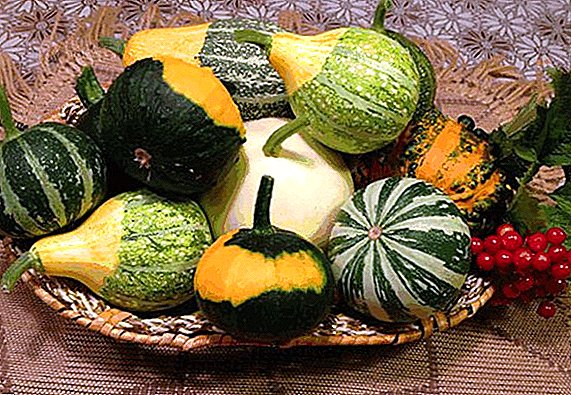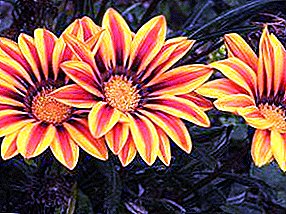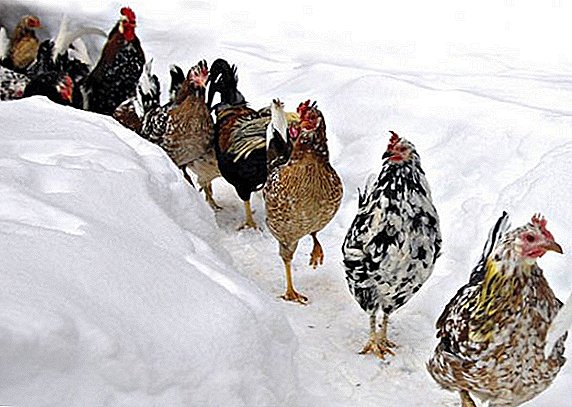 When breeding different breeds of chickens, special attention has always been paid to such an important indicator as frost resistance, because in many countries there are very severe winters.
When breeding different breeds of chickens, special attention has always been paid to such an important indicator as frost resistance, because in many countries there are very severe winters.
We will talk about some of the domestic and foreign representatives of the chicken brethren, who show good resistance to frost.
Domestic breeds of chickens
Today, among the many domestic breeds characterized by frost resistance, the following are listed.
Pavlovskaya
Pavlovian chickens, as an ornamental breed, are distinguished by unusual plumage - it is somewhat similar to the capercaillie. In the breed there are two colors: black with white (silver) and black with golden. The main part of the pen is white or golden, and on the tip it has a black color.  These birds do not differ in large sizes. The weight of the chicken is about 1.5 kg, and the rooster - 1.8-2.2 kg. Their productivity is in the range of 80-120 eggs per year. Egg weight 45-50 g
These birds do not differ in large sizes. The weight of the chicken is about 1.5 kg, and the rooster - 1.8-2.2 kg. Their productivity is in the range of 80-120 eggs per year. Egg weight 45-50 g
This bird does not like keeping in cages, it prefers the will and feels good in a spacious henhouse. In addition, she needs a place for walking, since these are moving creatures and the lack of walking will have a bad effect on their well-being. In food, they are quite unpretentious and happy to get their own food. But in winter, it is desirable to include vitamin supplements in the diet, which in summer birds can get from green fodder.  Roosters of this breed are considered great fighters and can kill an opponent to death. But the chickens are very caring moms.
Roosters of this breed are considered great fighters and can kill an opponent to death. But the chickens are very caring moms.
If you are going to wind up these birds, consider their advantages:
- frost resistance and good resilience;
- precocity and developed nasi instinct;
- tasty meat and rather large eggs.
But these chickens are bred more for beauty than for receiving from them egg and meat products.
Did you know? The inhabitants of ancient Iran, the rooster was considered the most sacred animal.
Poltava clay
Poltava clay belongs to meat and egg rocks. The name of the bird is due to its coloring, which has all the shades of clay: from light beige to dark yellow with a red tint. Fly feathers and tail feathers at the ends are darkened. In addition to good resistance to cold, chickens have a quick adaptation to the climate, durable and unpretentious to the content.  In addition to these advantages, they have others:
In addition to these advantages, they have others:
- birds quickly gain weight - at six months roosters weigh one and a half kilograms;
- rooster weight - 3.5 kg, and chicken - 2.5 kg;
- good hatchability and survival rate of chickens (up to 97%);
- the chicks quickly feather;
- productivity is about 200 eggs per year;
- meat to taste is valued higher than the popular leggorn;
- they have a friendly character, males do not fight;
- are easy to breed, females are beautiful hens.
 It is believed that the clay color and brown color of eggs are the result of the dominant gene in the breed.
It is believed that the clay color and brown color of eggs are the result of the dominant gene in the breed.
Important! The disadvantage of Poltava clay is a predisposition to obesity, which degrades the quality of products and shortens the life of chickens, so they need daily walking and diet (feeding - no more than twice a day).
This is one of best breeds for content, which will provide both meat and egg products.
Pushkinskaya
Pushkin hens were bred relatively recently. In the final version they appeared in 2007. One of the differences is the variegated plumage. The color of cocks prevails white, and in chickens - black.  These are universal representatives of chickens, who have many positive qualities:
These are universal representatives of chickens, who have many positive qualities:
- resistance to low temperatures;
- precocity and rapid growth of young;
- ease of maintenance;
- high chick hatching rates (90-95%);
- good productivity (250-270 eggs per year);
- long period of productivity (3-4 years);
- increase in egg weight (by 7 months - up to 65-75 g);
- early puberty (at 5-6 months);
- good presentation of carcasses;
- calm character.
 One of the drawbacks of Pushkin hens is the loss of brooding instinct, as well as the tendency to overeat. Most activity of roosters can be quickly attributed to pluses, since this provides a high percentage of fertilized eggs. Pushkin's chickens will provide the host with delicious meat and excellent large eggs.
One of the drawbacks of Pushkin hens is the loss of brooding instinct, as well as the tendency to overeat. Most activity of roosters can be quickly attributed to pluses, since this provides a high percentage of fertilized eggs. Pushkin's chickens will provide the host with delicious meat and excellent large eggs.
Check out a selection of breeds of the most unpretentious chickens.
Hercules
This is quite a young cross, quickly gained popularity. The name speaks for itself - cocks grow to 5 kg, chickens a little smaller - 3.5 kg. Males are very beautiful and prominent, strong build. This is a cross-meat-egg direction. During the year you can get 200 eggs or more. The weight of 1 egg is up to 60 g.  Hercules love space. They will feel great in the yard and in the garden. It is an unpretentious, hardy and disease-resistant bird, quickly gaining weight. Due to the dense plumage with a large number of fluff, these birds are well tolerate cold. And in the heat, they also feel good.
Hercules love space. They will feel great in the yard and in the garden. It is an unpretentious, hardy and disease-resistant bird, quickly gaining weight. Due to the dense plumage with a large number of fluff, these birds are well tolerate cold. And in the heat, they also feel good.  Chickens are much stronger than other chickens. Especially careful care they need only in the early days. The main thing is to provide them with good food: both adults and kids. It is advisable to give the hens feed, which will help to achieve good indicators of weight and egg production.
Chickens are much stronger than other chickens. Especially careful care they need only in the early days. The main thing is to provide them with good food: both adults and kids. It is advisable to give the hens feed, which will help to achieve good indicators of weight and egg production.
Did you know? Chickens are depicted on coins of 16 countries and in this are the peculiar leaders of the avian world.
Zagorskaya salmon
Breed Zagorsky salmon chickens does not have an outstanding appearance. They got their name because of the color of feathers, the color resembling salmon fillet. Only females have these pinkish feathers on their chests; the roosters do not have them. The belonging of chickens to one or another sex can be distinguished already in the first days: the females on the back have gray specks or stripes.  A proud look to salmon chickens gives a long body with a straight back and a wide chest. But they have a small tail, even roosters. These birds are very popular with poultry farmers because such characteristics:
A proud look to salmon chickens gives a long body with a straight back and a wide chest. But they have a small tail, even roosters. These birds are very popular with poultry farmers because such characteristics:
- good carcass weight, especially cocks (about 2.5 kg);
- quickly gaining weight and unpretentious to feed;
- chickens are excellent hens;
- egg production - up to 260 pieces per year, eggs are large (65-70 g), of an unusual brown color;
- the beginning of productivity already in 3-4 months;
- Excellent adaptability to cold, heat and other adverse conditions.
 The owners who have these chickens are very pleased with them. These omnivorous and picky creatures fully pay off and are suitable for maintenance in any farm - both farming and private.
The owners who have these chickens are very pleased with them. These omnivorous and picky creatures fully pay off and are suitable for maintenance in any farm - both farming and private.
We advise you to read about the breeds of chickens with the largest eggs.
Foreign breeds of chickens
Not only ours, but also foreign breeders try to bring out such varieties of chickens, whose performance and health would not be affected by harsh climatic conditions. Some of them will be discussed further.
Iceland Landrace
Not very popular, but noteworthy breed Iceland landras. These chickens were obtained from local European layers that came to the country thanks to the Vikings. They have the performance and meat and egg directions. These are very attractive creatures with lush plumage, which can have various shades: red, black, blue, fawn and others.  Birds have the following characteristics:
Birds have the following characteristics:
- a powerful body is covered with thick and dense plumage, thanks to which the bird does not freeze even in very cold weather;
- early onset laying;
- cock weight - about 3.5 kg, and chicken - up to 2.5 kg;
- puberty begins at 5 months;
- egg production reaches 220-230 eggs per year, the weight of one egg is 60-65 g;
- rushing all year regardless of the season;
- have small, almost imperceptible from afar wings;
- the rooster keeps order and maintains discipline;
- have an obedient and calm disposition;
- During the season, two generations of chickens can breed, the plump plumage allows laying more eggs;
- high (up to 98%) survival rate of offspring;
- they eat everything, but the better the food, the better the productive potential is revealed.
 The frost resistance of landraces is unparalleled, but they are poorly adapted to the heat, which is probably why they are rarely bred in our latitudes.
The frost resistance of landraces is unparalleled, but they are poorly adapted to the heat, which is probably why they are rarely bred in our latitudes.
Did you know? The rooster is the national symbol of France. The most likely reason for this is that he was highly revered by the Gallic tribes, considered to be the ancestors of the modern French.
Red Hat
These chickens belong to old english egg breed. Previously, many farmers were engaged in breeding it, but more recently, more promising chicken representatives have been pushing it out. These birds owe their name to a pink-like crest that looks like a cap; this adornment was given to them from Yorkshire pheasants.  Red-crested chickens have a small body, since they belong to the egg type. But their egg production exceeds two hundred pieces a year. Eggs are quite large - 60 g and above. They, like the "Icelanders", can be carried in the winter. The feather cover is distinguished by long feathers. Although the weight of the carcass and not very big, but the meat has excellent taste.
Red-crested chickens have a small body, since they belong to the egg type. But their egg production exceeds two hundred pieces a year. Eggs are quite large - 60 g and above. They, like the "Icelanders", can be carried in the winter. The feather cover is distinguished by long feathers. Although the weight of the carcass and not very big, but the meat has excellent taste.  Having mentioned the merits of these birds, one can not but mention several shortcomings:
Having mentioned the merits of these birds, one can not but mention several shortcomings:
- lack of instinct incubation;
- bad weight gain.
Perhaps because of these two features, the number of these chickens is not as large as we would like.
It is interesting to learn about the origin and history of the domestication of chickens.
Appenzeller
Uppenzellera is a Swiss, rare today decorative breed of an egg orientation. Chickens have an unusual appearance: in addition to the comb, similar to the letter V, their head is decorated with a fluffy tuft. They have either a pure black plumage, or with a golden or silver tint. For 300 years, Appenzellers were fairly common, especially in Swiss monasteries. But later they began to be replaced by more modern and productive breeds.  The advantages of these birds include the following qualities:
The advantages of these birds include the following qualities:
- tolerate the weather of high-altitude areas, cold and heat;
- productivity is about 180 pieces in the first year;
- chickens - good hens and caring mothers;
- have a lively disposition and conflict-free character;
- in food undemanding.
 But appencellers have disadvantages:
But appencellers have disadvantages:
- decrease in egg production after the first year to 150 pieces and below;
- low carcass weight: chickens gain up to 1.5 kg, and roosters up to 1.8 kg;
- sensitive to sudden changes in temperature;
- need free-range, the content in the cells is unacceptable;
- high curiosity can be the reason for the birds to scatter in different directions and it will be difficult to assemble them.
Now it is rather difficult to get this decorative breed, as it is bred only in some professional farms.
We recommend to get acquainted with the collections of breeds of chickens: white and red chickens; the biggest and most unusual; chickens with shaggy paws.
Lakenfelder
These birds are of Belgian or Dutch origin (there is no consensus on this score). Received its name from the Dutch city of Lackervelt. What is the reason for the unusual black and white color, it is still not clear. It is known that this quality does not possess durability and changes.  In the offspring, mostly black or white individuals predominate. Chickens with the right color are rare, it indicates the degeneration of the breed. Roosters have a beautiful, stately body with a neck covered with black long feathers and a white back. At the ends of the wings also come across black feathers. The tail of the same color, long and beautifully curved, visually enlarges the body of the rooster.
In the offspring, mostly black or white individuals predominate. Chickens with the right color are rare, it indicates the degeneration of the breed. Roosters have a beautiful, stately body with a neck covered with black long feathers and a white back. At the ends of the wings also come across black feathers. The tail of the same color, long and beautifully curved, visually enlarges the body of the rooster.
Learn more about Laekenfelder chickens.
The chicken has a similar description, only with a smaller crest and earrings, and without long braids on the tail.  This meat-egg breed has quite good characteristics:
This meat-egg breed has quite good characteristics:
- productivity - about 180 eggs per year, with an egg mass up to 50 g;
- dense plumage provides good cold tolerance;
- quietly tolerate fluctuations in temperature and humidity;
- the rooster grows to 2-2.5 kg, and the chicken - almost a kilogram more, which is very rare.
Lakenfelders are considered difficult both in care and in breeding, therefore specialists are mainly engaged in their breeding and maintenance.
Important! Errors in nutrition adversely affect productivity. The bird needs a lot of green fodder, in the winter time they give hay or grass meal.
Bielefelder
These chickens were bred in Germany and have existed officially since the 1980s. They have an unusual plumage, which is called "krill" and is a strip of black and golden color.  Males and females are slightly different in color: the back, neck and head of roosters are of ocher color and the body has white spots with black stripes, in chickens the head and neck are red, the belly and sides are covered with brown spots white stripes.
Males and females are slightly different in color: the back, neck and head of roosters are of ocher color and the body has white spots with black stripes, in chickens the head and neck are red, the belly and sides are covered with brown spots white stripes.
Learn more about the Bielefelder breed.
When breeding these birds, the goal was to get a frost-resistant, large, with good egg-laying poultry. It matches all requests:
- very large individuals: roosters - from 4 to 4.5 kg, and hens - about 4 kg;
- high egg production (up to 230) and large eggs (65-70 g);
- start from 6 months;
- grow rapidly and gain weight;
- resistant to cold and disease;
- have a calm nature;
- unpretentious in the content.
 The disadvantages include a decrease in the number of eggs after two years of age. But since the benefits are much greater, this bird is found on farmsteads quite often.
The disadvantages include a decrease in the number of eggs after two years of age. But since the benefits are much greater, this bird is found on farmsteads quite often.
Read also about the breeds of chickens for breeding in Siberia.
Fireball
Chickens fireball appeared in the eponymous French terrain. And initially they were taken out in order to get a tasty broth. But later, after crossing with meat chickens, these birds became suppliers of quality meat. A characteristic species characteristic of the breed is the presence of an original “hairstyle”: the feathers under the ears are directed upwards and sideways, and the plumage of the legs is in the form of panties.  Firewall has the following characteristics:
Firewall has the following characteristics:
- rooster weight up to 4 kg, and chicken - 3-3,5 kg;
- egg production - 150-160 pieces in 1 year, then - about 130 eggs;
- egg-laying remains in winter;
- the rapid growth of chickens;
- resistant to cold;
- early maturity and tasty meat;
- having a proud posture and calm nature.
 The disadvantage is obesity, the cause of which is the tendency to immobility and overeating.
The disadvantage is obesity, the cause of which is the tendency to immobility and overeating.Important! When crossed with representatives of other breeds, the market quickly lost productive qualities.
So, you were able to get acquainted with the breeds of chickens that tolerate frosty winters well. Of these breeds, you can choose and decorative, which will please the eye, and those that will give delicious meat and eggs.


